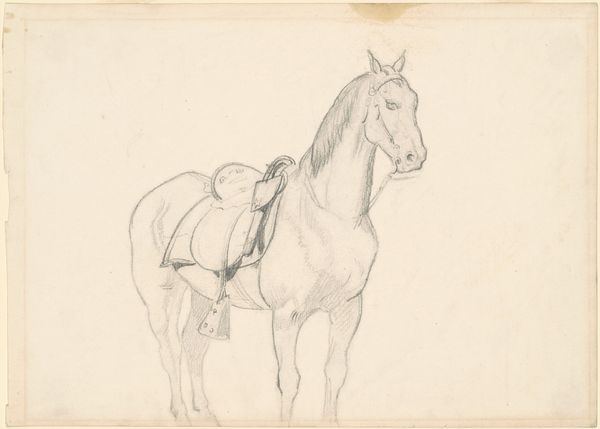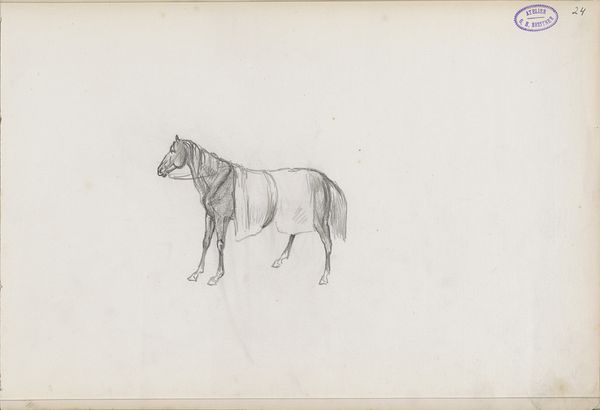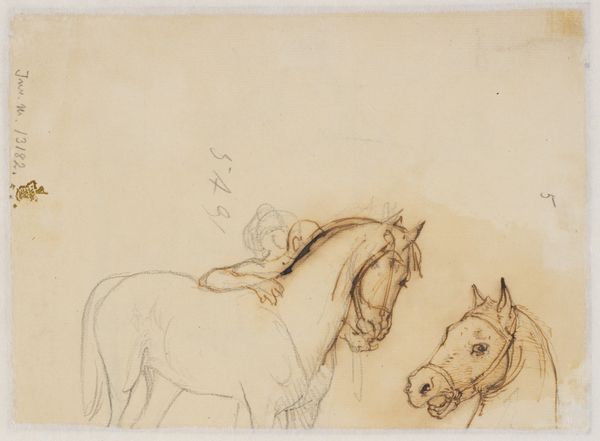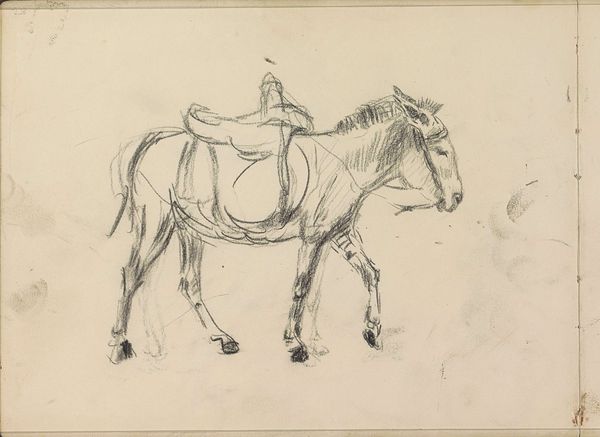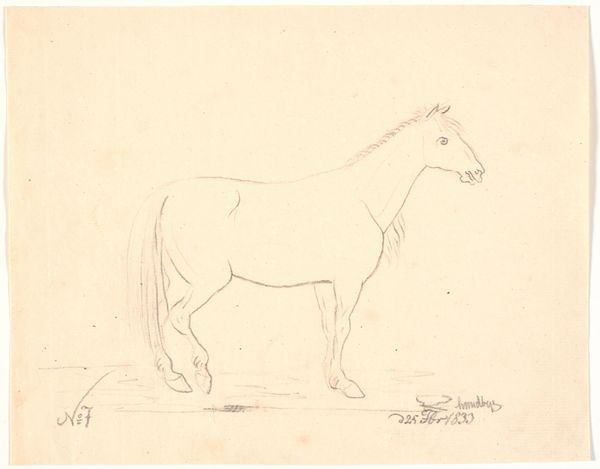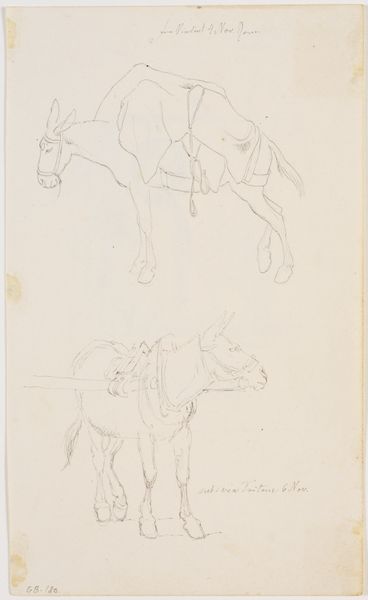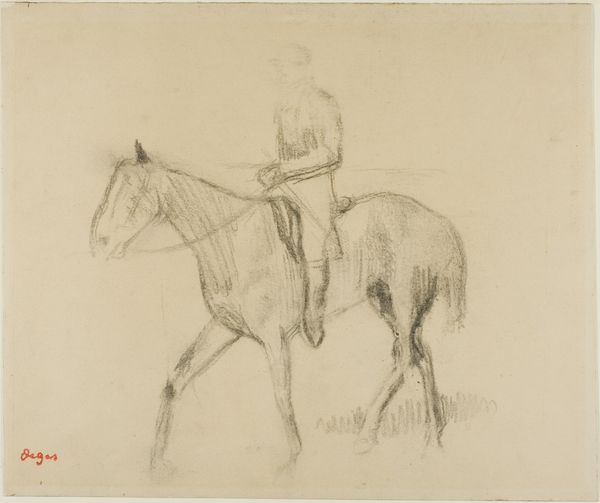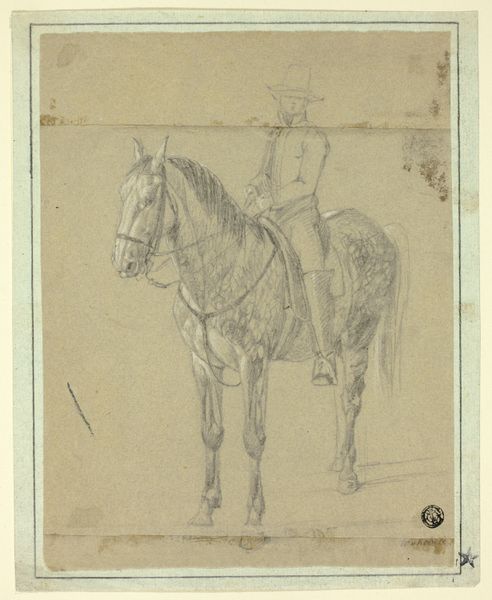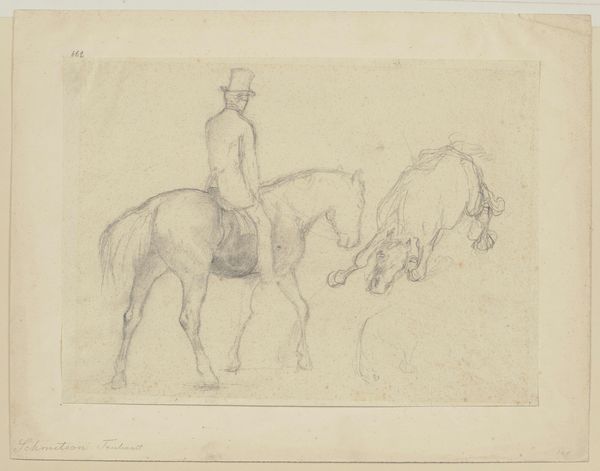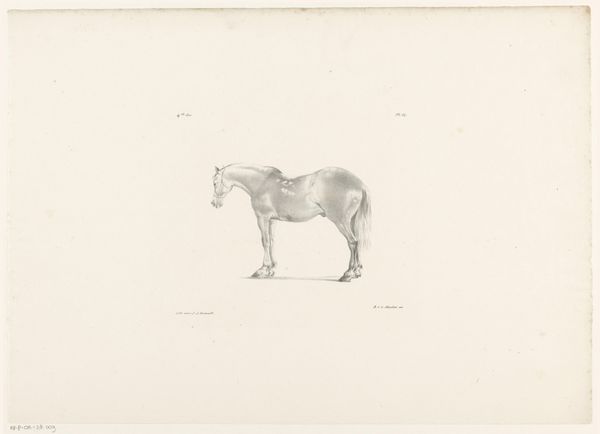
Dimensions: Image: 10 1/16 × 7 1/16 in. (25.5 × 18 cm) Plate: 10 13/16 × 7 13/16 in. (27.5 × 19.9 cm) Sheet: 19 1/8 × 13 9/16 in. (48.6 × 34.5 cm)
Copyright: Public Domain
Curator: Before us we have "A rider," a drawing done sometime between 1847 and 1890, a creation of John-Lewis Brown that now resides here at the Metropolitan Museum of Art. It seems to be rendered primarily in pencil, and exists as both a drawing and a print. Editor: It possesses an airy quality, doesn’t it? The rider almost appears to float on the page. I’m struck by a quiet isolation; the very soft lines seem to portray someone who's deeply internalized their struggles. Curator: Note how the artist employs the horse, it’s a prevalent symbol in numerous cultures, and traditionally associated with power, freedom, but also loyalty and service. The rider and the horse often carry intertwined symbolism; they can represent the self, with the rider as reason or intellect guiding the animal instincts or primal energy. The posture almost evokes a pilgrimage of sorts. Editor: And is that "freedom" really available to all? I wonder about this rider’s status within his own society. Are we to assume, based on the depiction, that we are looking at an image of power and control? Or could this image instead represent the lonely burdens of the elite, alienated from a populace who enable such an aristocratic existence? The man and his horse seem profoundly separate from everything else; adrift. Curator: Yes, his isolation could stem from the inherent responsibilities of leadership or authority, evoking themes of solitude and introspection, though one must also recognize the Romantic leanings that are stylistically self-evident here. Look at the naturalism present alongside those stylized details, this all seems intentionally rendered to portray a harmonious bond with nature, despite whatever burdens he might face. Editor: While Romanticism absolutely seems to be present, such harmony isn’t universally accessible, especially along lines of wealth or power. Consider how access to land, leisure, and equestrian activities—inherently class-bound—shapes this perceived "harmony." So in this particular image, I question whether or not what is depicted speaks to a harmony of an unequal social structure. Curator: This is why engaging with art remains imperative. An image of apparent solitude sparks a reflection on class, privilege, and the inherent values embedded in representation. Thank you for taking the time to be my interlocutor for the moment. Editor: The pleasure was all mine. Hopefully our conversation allows the viewer a broader look, one that moves beyond the beautiful surface towards its contentious substructure.
Comments
No comments
Be the first to comment and join the conversation on the ultimate creative platform.


